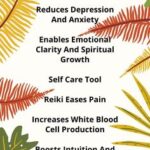Dealing with motivation and chronic pain can feel absolutely overwhelming. It is easy to start believing that you are at fault, that you are lazy or not worthy, especially when those thoughts of “why bother” are constantly in your head.
The good news though is, that there is science behind what you are feeling, and importantly it is not your fault, and reassuring, there are ways to gain some control.
May you make the best use of what is in your power and take the rest as it happens.
How Chronic Illness Ruins Your Motivation (and what to do about it)
Study reveals brain mechanism behind chronic pain’s sapping of motivation
Mice suffering chronic pain undergo a change in brain circuitry that makes them less willing to work for a reward, even though they still want it.
July 31, 2014 – By Bruce Goldman

Robert Malenka and his colleagues found that chronic pain changed the brain circuitry in mice, making them less willing to work for rewards. Steve Fisch
Chronic pain is among the most abundant of all medical afflictions in the developed world. It differs from a short-term episode of pain not only in its duration, but also in triggering in its sufferers a psychic exhaustion best described by the question, “Why bother?”
A new study in mice, conducted by investigators at the Stanford University School of Medicine, has identified a set of changes in key parts of the brain that may explain chronic pain’s capacity to stifle motivation. The discovery could lead to entirely new classes of treatment for this damaging psychological consequence of chronic pain.
Many tens of millions of people in the United States suffer persistent pain due to diverse problems including migraines, arthritis, lower back pain, sports injuries, irritable bowel syndrome and shingles. For many of these conditions, there are no good treatments, and a crippling loss of mojo can result.
“With chronic pain, your whole life changes in a way that doesn’t happen with acute pain,” said Robert Malenka, MD, PhD, the Nancy Friend Pritzker Professor in Psychiatry and Behavioral Sciences and the study’s senior author. “Yet this absence of motivation caused by chronic pain, which can continue even when the pain is transiently relieved, has been largely ignored by medical science.”
A series of experiments in mice by Malenka and his colleagues, described in a study published Aug. 1 in Science, showed that persistent pain causes changes in a set of nerve cells in a deep-brain structure known to be important in reward-seeking behavior: the pursuit of goals likely to yield pleasurable results. Malenka’s lab has been studying this brain structure, the nucleus accumbens, for two decades.
“We showed that those brain changes don’t go away when you transiently relieve the mice’s pain,” Malenka said. The experiments also indicated that the mice’s diminished motivation to perform reward-generating tasks didn’t stem from their pain’s rendering them incapable of experiencing pleasure or from any accompanying physical impairment, he said.
How pain and reward interact
“This study is important — to my knowledge, the first to explain how pain and reward interact. It begins to get to an understanding of why it’s such a struggle for people undergoing chronic pain to get through the day,” said Howard Fields, MD, PhD, a professor of neurology at the University of California-San Francisco and founder of that school’s pain management center.
Fields, who did not participate in the Malenka group’s study but wrote an accompanying perspective piece published simultaneously in Science, described the psychological effect of chronic pain as “the clouding of the future. There’s no escape from it. You want it to end, but it doesn’t.” As a result, people become pessimistic and irritable, he said. “People come to expect the next day is going to wind up being painful. It just takes the edge off of life’s little pleasures — and big pleasures, for that matter.”
The experiments were spearheaded by the study’s first author, Neil Schwartz, PhD, a postdoctoral scholar in Malenka’s lab. “You can’t just ask a hungry mouse how motivated it is to pursue its heart’s desire,” Malenka said. “But there are ways of asking that mouse, ‘How hard are you willing to work for food?’”
Schwartz, Malenka and their associates looked at lab mice enduring chronic paw pain due either to persistent inflammation or to nerve damage. The mice also happened to be hungry. The scientists trained the mice to poke their noses into a hole to get a food pellet. At first, a single nose poke earned a pellet. But over time, the number of nose pokes required for a reward was increased. In essence, the researchers were asking these mice: How hard are you willing to work for food? Will you poke your nose into that hole once to satisfy your hunger? Ten times? Even 150 times?
Fading motivation
Within a week after the onset of chronic pain, the animals grew increasingly less likely to work hard for food than pain-free control animals were. The researchers next explored three possible explanations: Were the mice unable to work because their pain was too severe? Did something about being in pain cause them to not value the food reward as much? Or was their failure to seek food due simply to a lack of motivation? Additional tests showed that the mice had no movement problems. “Like other research groups, we found that they can scamper around just fine,” said Malenka. Also, when the mice were given free access to food, they ate just as much as the animals who weren’t in pain — so they still valued the food. But they were less willing to put in an effort to obtain food than mice who’d suffered no pain.
Moreover, the difference didn’t disappear even when the scientists relieved the mice’s pain with analgesics. “They were in demonstrably less pain, but they were still less willing to work,” Malenka said.
The Stanford scientists then focused on the nucleus accumbens, a brain structure known to be involved in computing the behavioral strategies that prompt us to seek or avoid things that can affect our survival. They found that chronic pain permanently changed certain connections to the nucleus accumbens, causing an enduring downshift in the excitation transmitted by them. Importantly, Malenka’s group showed that a particular brain chemical called galanin plays a critical role in this enduring suppression of nucleus accumbens excitability.
Galanin is a short signaling-protein snippet secreted by certain cells in various places in the brain. While its presence in the brain has been known for a good 60 years or so, galanin’s role is not well-defined and probably differs widely in different brain structures. There have been hints, though, that galanin activity might play a role in pain. For example, it’s been previously shown in animal models that galanin levels in the brain increase with the persistence of pain.
Possible therapies?
Schwartz, Malenka and their peers identified receptors for galanin on a set of nerve cells in the nucleus accumbens and demonstrated that disabling galanin’s signaling via this receptor prevented the long-term suppression of motivation seen in mice — and people — with chronic pain. This suggests that therapeutic compounds with similar effects could someday be developed, although they would have to be carefully targeted so as to not disrupt galanin signaling in other important brain circuits.
“There’s no reason to think this finding won’t generalize to people,” said Fields of UCSF. “Our brains have galanin, and a nucleus accumbens, just as mouse brains do. However, before jumping from mice to humans it would be wise to test other animal species. If the same things happen in a non-rodent species that happen in mice, then it’s probable they happen in humans, too.”
The study was funded by a Banting postdoctoral fellowship and the National Institutes of Health (grant DA008227). Additional co-authors were postdoctoral scholars Paul Temkin, PhD, and Jai Polepalli, PhD; former postdoctoral scholars Sandra Jurado, PhD (now at the University of Maryland), and Byung Kook Lim, PhD (now at UC-San Diego); and anesthesiology instructor Boris Heifets, MD, PhD.
Information about Stanford’s Department of Psychiatry and Behavioral Sciences, which also supported this work, is available at www.psychiatry.stanford.edu/.
 Bruce Goldman is a science writer for the medical school’s Office of Communication & Public Affairs.Bruce Goldman
Bruce Goldman is a science writer for the medical school’s Office of Communication & Public Affairs.Bruce Goldman
The following article was published on https://www.burningnightscrps.org/
Having the motivation to get up every day and face each new challenge can be incredibly difficult.
If you’ve found that you’ve been losing some motivation lately, or you’ve been struggling for quite a long time, read on to find out how you can continue to move forward one day at a time
Plan for the future
A lack of motivation can stem from feelings of helplessness, of uncertainty about the future, and a feeling that future rewards are not worth the current effort.
This can be a crippling feedback loop that can chip away at your mental health. If you are committed to motivating yourself and continuing to do positive actions for yourself, it’s important to be in touch with your feelings and recognise when you have great days, okay days, bad days, and particularly bad days.
In the latter times, your mind will be more prone to telling you that you’re not able to do this. Accept that like everyone, you will have good and bad days, and try to remain aware that the bad days will pass.
Allow yourself to reimagine a future of your own design. What does that look like? Map out what makes you happy. How can you find happiness in small ways every day?
looking forward to the future. It doesn’t have to be planning an international trip, it can be as simple as getting a bottle of wine at the weekend, meeting up with friends for an online call, or getting a good takeaway.
Factor in the difficult times
We might as well just say it as it is: on some days, having a chronic illness can make life unbearable. The concept of radical acceptance proposes that we make a step back from trying to fix or fight our problems and fully accept our experiences.
By coming to terms with the knowledge and understanding that you have a long term condition, we are better placed to tackle our issues head on.
This does not mean that we can’t advocate for ourselves or continue to search for ways to live meaningful lives. It simply means that we do not waste energy trying to change reality to suit our vision of what life ‘should’ be.
It’s also important to note that this would not necessarily apply to situations where pain management is a challenge. If you are suffering, you shouldn’t accept it simply because your care provider hasn’t been able to support you.
Factoring in the bad days along with the good will help you to get through the rollercoaster.
Plan, schedule, organise

When the pandemic hit, it was the first time for many people to find themselves stuck at home with limited opportunities to leave their home.
Many disability rights groups highlighted how many non-disabled people were experiencing this for the first time, but it was something that people with disabilities had been experiencing on a long-term basis without much recognition.
There were plenty of how-to articles and guides on how to cope with major changes to routines or advice for people who had suddenly been made redundant.
One of the key themes across these articles was to make plans and to keep to a daily schedule. This advice is really important for mental health and resilience skills.
Experts agree that finding ways to put purpose in your day is key to building good mental health. This could be as simple as preparing a healthy breakfast, making time to check in with friends or family, getting some form of exercise, or spending time being creative.
If you’re able to develop a bathing and grooming routine that works well for you, it can pay dividends for your overall motivation.
Making plans is an important way to keep looking forward to the future. It doesn’t have to be planning an international trip, it can be as simple as getting a bottle of wine at the weekend, meeting up with friends for an online call, or getting a good takeaway.
Be patient with yourself
Do you ever find yourself getting frustrated with yourself? Are you overly self-critical? Do you get impatient with yourself for not doing enough or not meeting your goals?
This is normal behaviour, but if left unchecked, it can be very detrimental to your mental health. Don’t allow yourself to slide down into feelings of consistent self-criticism because it can be very hard to stop yourself from getting stuck in these patterns of thought.
Imagine that you were speaking to a friend who is telling you some of the problems you were having. How would you react? Show yourself the kindness and compassion you would show to others and allow yourself the time that you need.
If you plan your day and you hope to get X, Y, and Z completed, but by the end you only get half of X done – give yourself a break. There’s no rulebook on how anyone should live their lives.
With the additional needs placed on people with CRPS it’s common to feel like you’re a burden on family, friends, or caregivers. Danielle (not her real name) told us how she felt that “CRPS just chips away at you.”
Practice gratitude

Studies show that people who actively practice gratitude and thankfulness in their daily lives have higher levels of motivation and wellbeing.
Being able to acknowledge the positives during adversity is important because it helps to put life in perspective.
Perhaps you are struggling with your chronic pain, but you are able to maintain a high level of independent mobility. Maybe you are finding managing your mental health difficult, but your pain levels are under control today.
Everything is relative in that you neither have the easiest nor the most difficult life. In order to build resilience and maintain high levels of motivation, practice gratitude by writing down lists of things you’re happy about.
As well as being thankful for what you have, give something back if you can. Why not volunteer and help others in a similar situation?
Rely on your community
Never forget to reach out to people who care about you and those who know first-hand what it’s really like to suffer from a chronic illness.
Although it may feel like you’re on your own, reach out to access a wide network of people who can empathise, rant, rejoice, and share in your experiences.
https://www.burningnightscrps.org/support/news-and-blog/article/tips-to-stay-motivated-with-chronic-pain/






